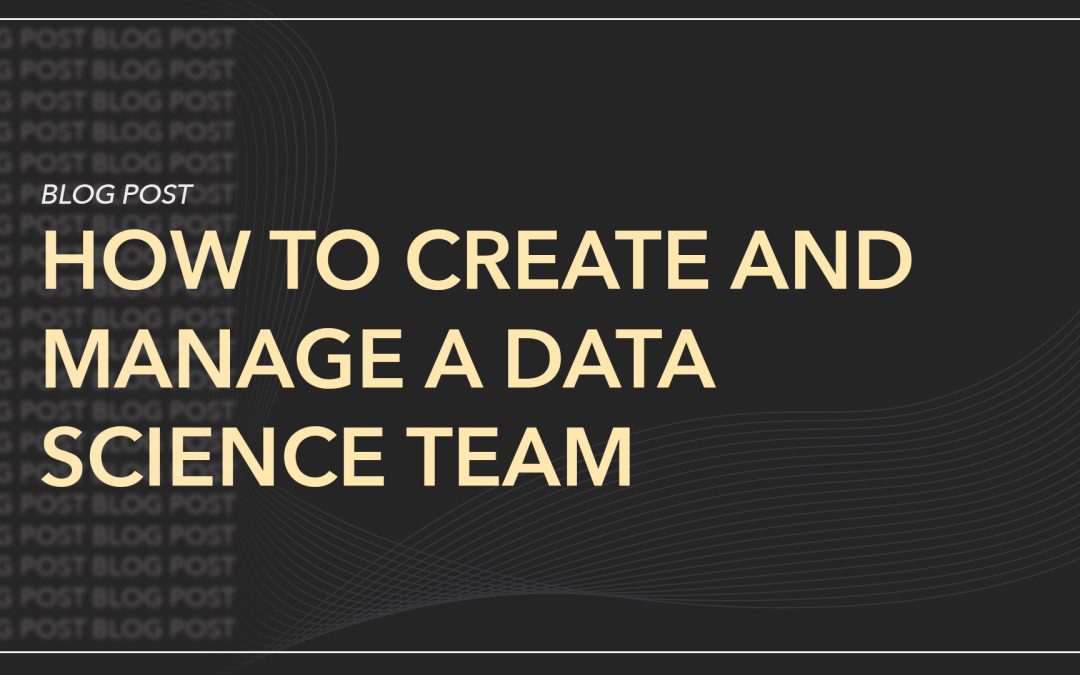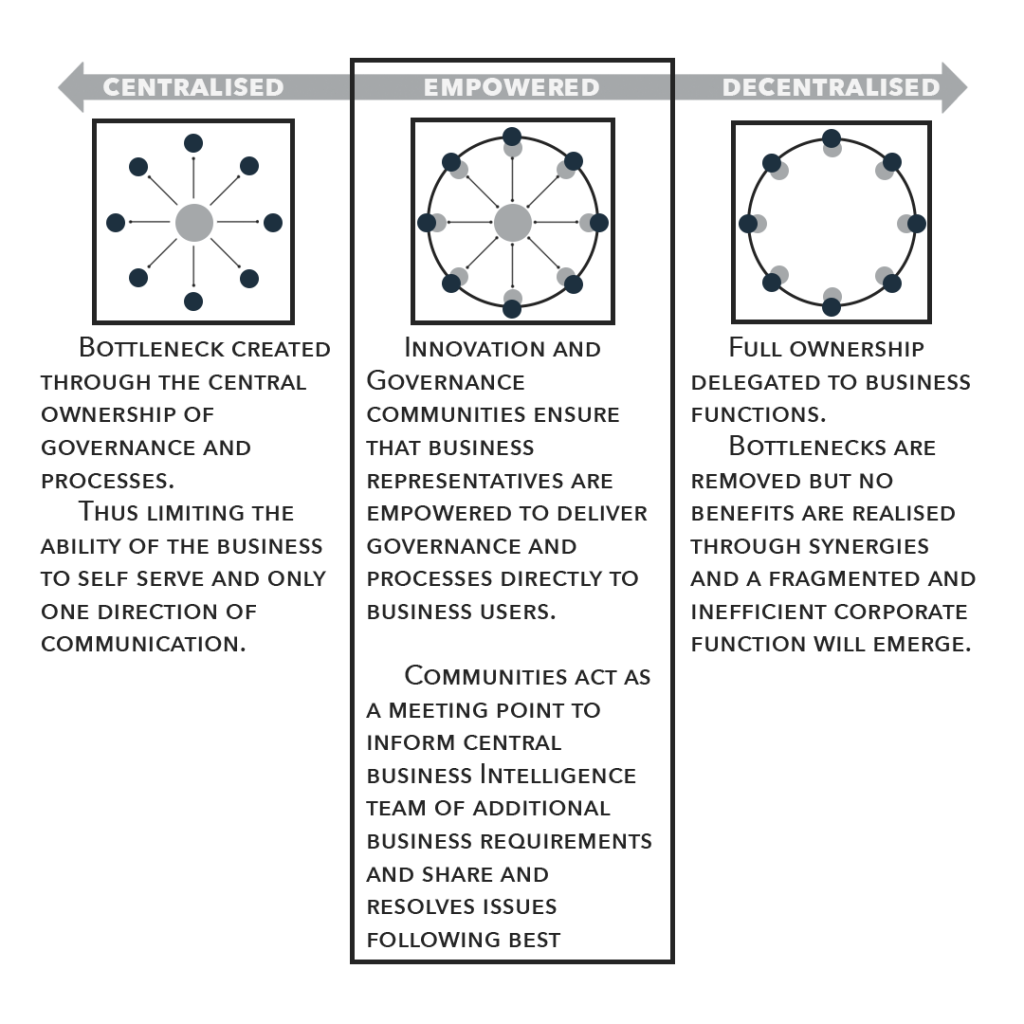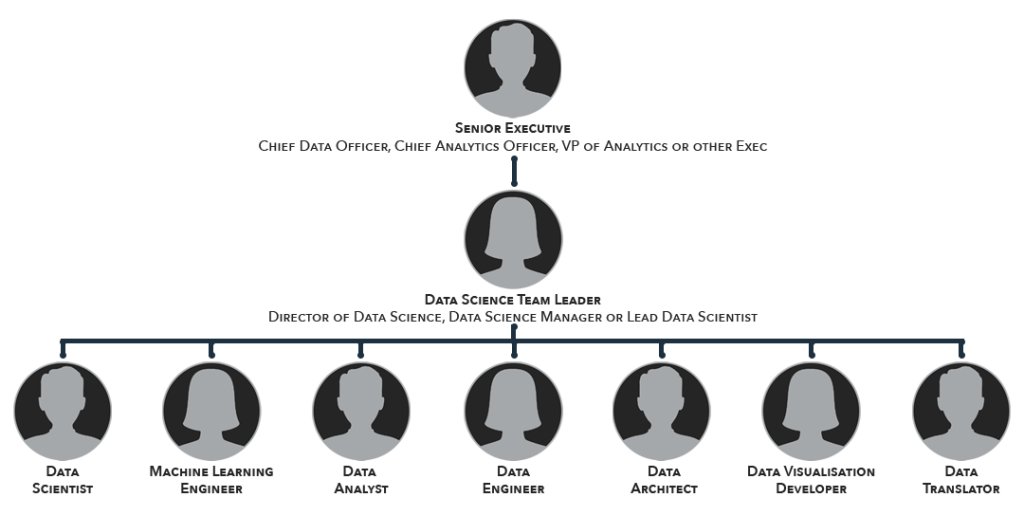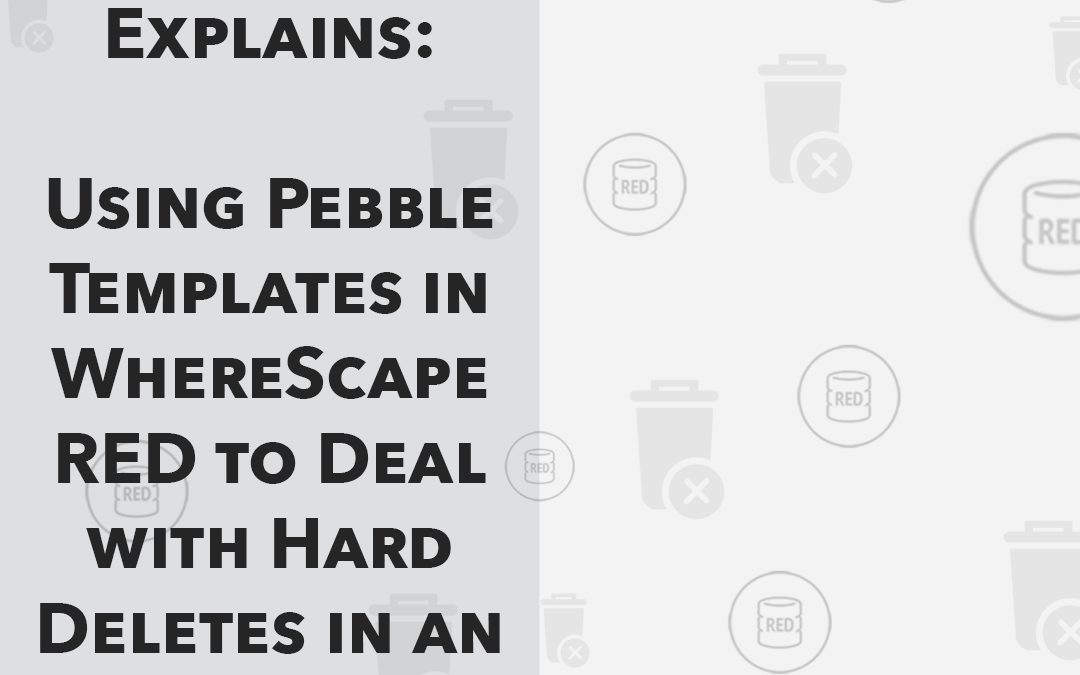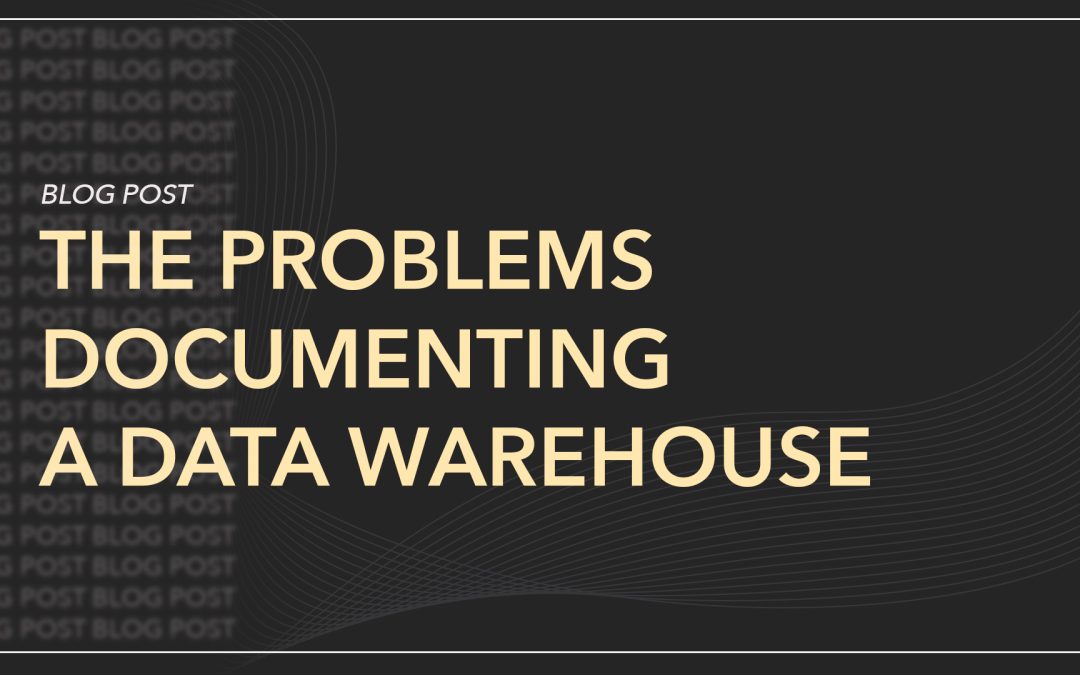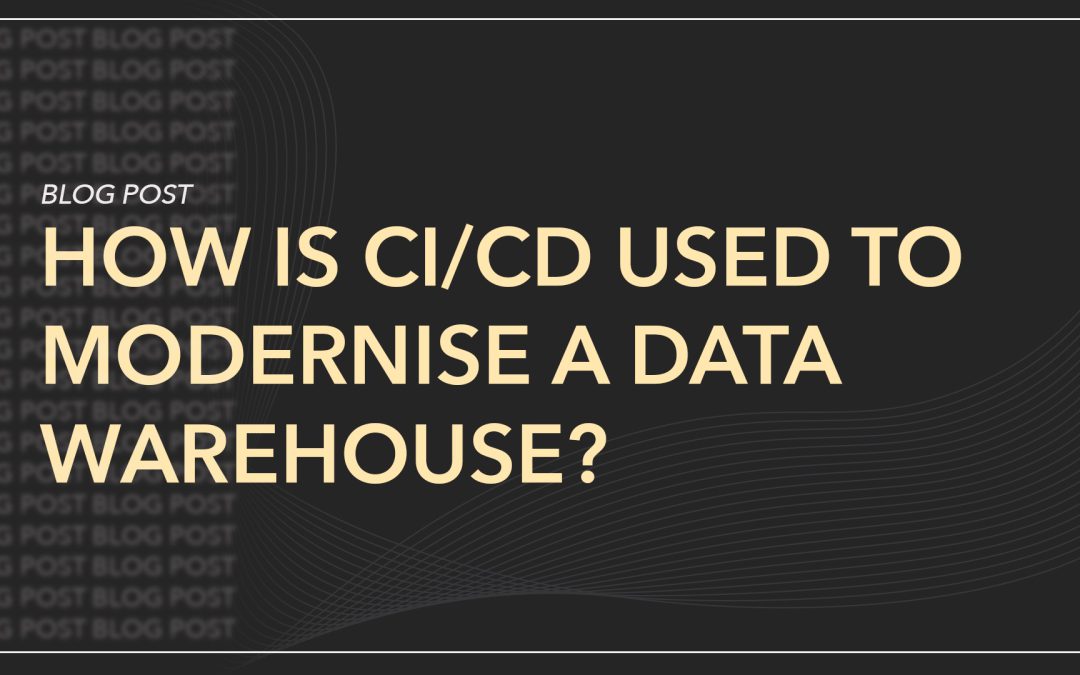
by Tyler Bodys | Feb 13, 2023 | Learn, News
Data Strategy is a complex subject, but one that can make all the difference in your business. Whether you want to generate more sales or improve customer support, you can do several things to get the most out of your data.
Here are our 10 Tips and Tricks for making a Data Strategy work for you!
Company Objectives AKA Top-Down:
1. Understand Business Goals
Knowing your company’s direction is essential before you start implementing a Data Strategy. You could have all the data in the world, but if it isn’t used correctly, what good is it?
Tip: You will often hear that data strategy is the ‘new business strategy’. And as such, you need to understand and analyse the information within your organisation to make informed decisions. You can do this by developing a data strategy that includes goals, issues and drivers for collecting data, as well as considering what types of data exist within your organisation – and where those sources may have come from.
2. Have a Data Strategy
You’re just wandering in the dark without a plan! Your employees must know about the importance of data and how it affects their work. By building a culture where data is valued, you can leverage its power to make better business decisions
Tip: Ensure that you have top-down buy-in from the top level of the company and that the Data Strategy is linked to business objectives. It will ensure that crucial business members are invested in the success of the data strategy if it means that the business objectives are successful!
People and Culture:
3. Build a Data-Driven Culture
You can’t manage what you don’t measure! your employees must know the importance of data and how it affects their work. By building a culture where Data is valued, you can leverage its power to make better business decisions.
Tip: it might not be worth collecting the data if you can’t answer the question, “what does it mean for me?”. Instead, think about what business problem you want to solve through the data, what do you need to know, or what you want to achieve.
Tip: Empower your team to make decisions based on data; you’ll be able to achieve the best results possible. The best way of doing this is by sharing information and allowing them to ask questions.
Tip: You can manage what you don’t measure! you must use the available data to make decisions about your company. Data can help you understand where there are gaps in some regions of your company, such as Sales and Marketing, and how they can be filled with more effective strategies.
4. Know your Data
It’s not enough to have data; you also need to know what it means. Look for patterns and trends in your data that can help you identify areas of opportunity and potential problems or issues that may pop up.
Tip: The key to success in data strategy lies in knowing what questions you are trying to answer and then identifying the ideal data required to answer those questions. Remember that nig data does not always mean the best data. It is important to think small. For example: by first understanding what questions your organisation whats to ask before working out what information you need to obtain.
Tip: It might not be worth collecting the data if you can answer the question, “what does it mean for me?” Instead, think about what business problem you want to solve through the data. What do you need to know, or what do you want to achieve?
5. Use Experts
Data is essential and can be highly confusing. From understanding how the data is created as part of the business process to sourcing data from the correct place – if you don’t have all the time or resources to devote to this, hire an expert who does! They will help you understand what your data means and how to make it work for you.
Tip: Understand the current data skills within your organisation. Will this enable or hinder your data strategy?
Tip: Can you train people to reduce the skill gap?
Process:
6. Data Governance
Data Governance is critical to data strategy success. Without proper leadership and policies that support information governance, your organisation can find itself overwhelmed by the complexity of managing data across its business units.
Tip: Start understanding who owns the data = from the moment it is created. These data owners know more about the data and how it can be properly used.
7. Change Management and Implementation
Data Strategy success hinges on change management. This is often overlooked in Data Strategy but is critical to a data strategy’s success. Change management has two parts:
– Ensure employees know why they should be excited about the new data strategy and how it will help them.
– Changing how things are done, so the new system works better after implementation.
Tip: There are always two sides to change, business and Technology. Make sure you coordinate both to avoid creating problems further down the line.
Technology:
8. Make Data Accessible
You don’t know anything without clear metrics! Your employees must know about the importance of data and how it affects their work. By building a culture where data is valued, you can leverage its power to make better business decisions.
Tip: Ultimately, reporting data aims to help you make informed decisions. Data Visualisations and presentations play an essential role in ensuring that the key insights from that data aren’t presented to the wrong people in the wrong way. At this stage, keeping your target audience in mind is perhaps one of the most important things to remember.
Tip: Once you understand what data is needed, how it will be turned into value, and how it will be communicated to the end user, there are several software and hardware considerations that you will need to address. What current analytic and reporting capabilities do you have? Should your legacy systems be supplemented with cloud solutions? How will the final reporting platform look when it’s deployed?
9. Using Technology:
You may not be able to buy all the technology you want on day one. Think about where your data is stored, processed and used. Different businesses have different concerns with processing efficiency and cost-saving storage. Others will have no option but to use the technology they already have.
Tip: Only collect, store and process the data needed for the data strategy’s primary objectives. Once successful, you can increase the scope to manage the remaining data.
Tip: Remove duplications as quickly as possible. If anything, this is a cost-saving exercise.
10. Keeping Up with the Times
Technology trends can significantly speed up a company’s data strategy. In recent years, due to COVID and the increased mobile nature of our daily lives, cloud technology and platforms have become more accessible. Data visualisation tools have also been accessed on more devices and device types.
Tip: Sign up for technology newsletters to understand the products’ development and roadmaps.
Your Data Strategy will not succeed if you do not have a plan to execute it.
This step-by-step guide will help you develop and implement your data strategy by identifying the key stakeholders, defining your KPIs and laying out the first steps for making things happen.
By working with the Data Professionals at Engaging Data, we will work with you to implement everything mentioned above and make your Data Strategy effective to make better business decisions and leverage the true power of data for your organisation’s longevity.
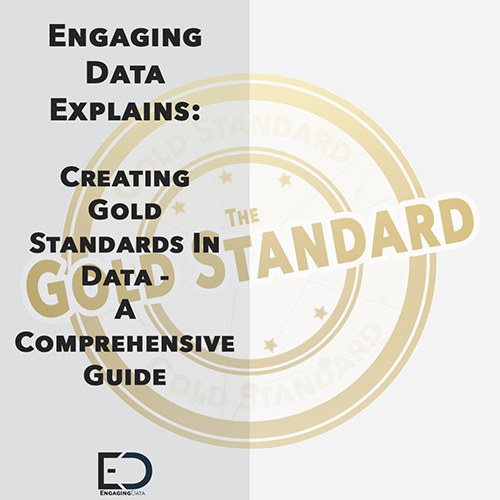
by Tyler Bodys | Jan 18, 2022 | Gold Standard, News
Engaging Data Explains :
The Gold Standards in Data –
A Comprehensive Guide
Achieving an excellent level of data architecture is far from easy. But it is certainly possible if you implement certain guiding principles. Central to this is the implementation of a gold standard benchmark, which can then underpin any effective data architecture operation.
However, a gold standard is not something that comes naturally. In our experience, it requires diligent thought, effort and openness to change.
Within this blog post we’re going to discuss some of the considerations related to this important goal for many organisations.
Resource Considerations
When we think about creating engaging analytics or data platforms to shape the growth of an organisation, the focus is often on the finding tool capable of developing the solution and not the surrounding aspects. But all of the ingredients that go into the mix are critically important.
Imagine you’re the owner of a cake shop providing bespoke cakes for your customers. Your products have to be good enough to keep customers coming back, but they also have to retail at an attractive price point. This means that there are immediately resource considerations.
You may choose to focus on providing a premium product, creating high-quality goods for a premium price. Alternatively, you may deliver a higher volume product, baking lots of different cakes on a larger scale, which are still of a good standard, but only suitable for a lower price point.
In order to make this decision, you need to understand the following:
- Product – what we are providing, and the value that we create.
- Place – the environment that makes it possible to create the necessary standard of products at a sustainable rate.
- People and Process – the team, the processes and the delivery environment (the bakery, the storage, the front of house, stock control, delivery, billing, etc.) that produce and maintain the consistent quality of product and experience.
If you can put all this together then you have the beginning of a gold standard in cake production. By the same token, in our field Engaging Data helps companies to review all of the data elements supporting such a setup, combining this with their aspirations to form bespoke gold standards. This enables our clients to achieve profitability and success.
Controlling The Input
Controlling input is a critical component of processing gold standard products. These vary, depending on what you are trying to produce, but examples include:
- Requirement gathering.
- Sources of data.
- Quality of data.
Controlling inputs and creating quality is critically important, as if you put terrible into a system then the ultimate outcome will be a terrible product! Thus, you need to understand the requirements of your customers. In the cake shop example, this would mean knowing what type of cakes your customers desire, the toppings needed, the date and time of delivery, any dietary requirements, and so on.
The good news is that controls can be quite straightforward. They can be something as simple as checking data. So in a cake shop, it’s vital to confirm the direct requirements of your customers, noting down all relevant information. This can make the vital difference between providing the ideal products for your customers, or producing something that seems excellent, but is rendered useless or sub-par by one important constituent. For example, you might produce a cake for someone with allergy needs that is simply inedible from their perspective.
Quality control can be achieved by creating a simple order form. For example, a cake shop might include:
- All vital information being distilled into yes/no questions – eg. “should cake contain nuts?”.
- Ensuring that all product types are selected, and that nothing out of the unusual is ordered.
- Product limitations being noted expressly on the form – acting as a reminder and preventing incorrect ordering.
Such a review process ensures that information is gathered correctly, and creates a collective responsibility for discerning the appropriate information. Important questions that you can ask yourself in a data environment to acquire such critical information include the following:
- How will the requirements come into the team?
- How do we need to record them?
- Do we have the right tools to collect the data?
- How will we handle data quality?
Output Consistency
The output is the result of your efforts, so you have an innate interest in ensuring that it’s the best possible product. In common with the input, it is important to understand what you can control to reduce risk, as this can have a big impact on your output.
Central to this process is building systems and controls that enable you to monitor outputs. This in turn makes it possible to assess if they need to be altered in any way. This means that in a cake shop, you may consider the impact that each of the following areas has on the supply chain of cakes:
- Production Team (bakers, shop front, etc.).
- Ensuring similar standards and experience.
- Providing the same customer experience.
- Ensuring knowledgeability about the production processes, industry and competitors.
Each aspect of the order and production process also needs to be assessed and standardised:
- Enjoyable and consistent ordering experience.
- Stock control to manage high-quality ingredients.
- Quality control of all products.
- Meeting all food hygiene regulations with a 5-star rating.
And then the tools of the trade should also be taken into consideration, as part of an ongoing auditing process. Central to this is ensuring that any equipment being used is within acceptable operational parameters, particularly not being overloaded or overstretched in any way.
So when you’re working in a data environment, or any working context, if you want to create gold standards then it’s important to continually monitor and challenge your processes. Ask yourself questions continually, such as:
- Do we have the right team in place?
- Do we understand what standard of products that we need to create?
- Do we have processes in place that enable us to produce quality products?
Reviewing is never the most exciting nor relished procedure! It often feels like an unnecessary grind that slows down your whole operation. But it’s actually a critical part of any good business, enabling you to identify major faults before they become ingrained.
Reviewing Processes
We’ve already seen in the first part of our gold standards blog post that the cake shop reviewed their existing processes before making a decision to change their order form. Often it’s only from self-assessing in this way that you can uncover new ways of working that enhance your productivity and efficiency.
It’s also important to emphasise that this needs to happen across the business. It’s normal to have a review as part of project governance for new projects, but it’s always worthwhile to reassess existing projects as well. They may be ‘good enough’, but they also might not be reaching the gold standard.
So in our cake shop scenario, how will the business assess the standard of the cakes being produced? Well, when the business reviewed the kitchen they found that each cook bakes one order, while also being responsible for checking their own cakes before they move to the decoration stage. This all seemed fine, but then the retailer received a few complaints about burnt edges and sub-par ingredients. Consequently, the cake shop reflected that its existing process of ‘marking your own homework’ was not sufficiently robust to identify problems.
In order to address this issue, several ways of reviewing the production of cakes were decided upon:
- A simple visual inspection – does the cake look uncooked or overcooked?
- A thorough test, such as breaking the centre of the cake to see if it is cooked.
- Pressing the centre of the cake to see if it springs back.
- Hiring Paul Hollywood as a tester!
All of these checks are designed to see if the cake has been cooked satisfactorily. The shop decided to opt for all options, with the exception of hiring Paul Hollywood! Instead, each baker will review one another’s baking, with the hope that the business will grow to support a head baker who will review all cakes.
Just as the cake shop reviewed its processes to put a more stringent review structure in place, the same can also be implemented in a data-driven environment. The following questions are examples of some that you can ask yourself as part of this process:
- Does the team need training?
- Do you need to recruit new people with different skill sets?
- Do the products need to change?
- Is the supply line quick enough?
- Would more people or different processes help with efficiency?
- Is the product still worth the effort that is invested in producing it?
Producing Gold
Once you’ve baked some quality cakes, you then need to take steps to market the product. It’s not enough to just produce the cakes and leave your customers to eat them if you want to maximise your marketing efforts. Building advocacy and influence via your customers is a great way of marketing your cakes to the right people. Word-of-mouth feedback from advocates is trusted by other potential customers, and is therefore far more effective than other forms of marketing.
However, there are two sides to the coin here. Negative feedback can be dangerous if it’s not managed effectively. Negative comments about the burnt edges of cakes will spread like wildfire to existing and prospective customers. But there are ways of recovering from this. Making courtesy calls to customers can provide you valuable insight into the process of ordering and consumption.
Getting the right team in place, tailoring products for your target market, and taking feedback onboard in an active process are all important facets of contemporary marketing.
What are the Considerations?
Gold Standards always begin with what you are looking to deliver and who this will benefit. Gold Standards should be designed to support outcomes, having considered both the internal and external factors that will influence design. Creating steps in the process to continually challenge the functionality of the end product and ensure that standards are still relevant to the end user should therefore be considered essential.
Sponsors and influencers can also play an extremely important role. Both can become prime advocates of your product, with the added benefit with sponsors that they pay you to advertise your goods or service!
Internal Considerations –
Data
Data can be compared to ingredients within a cake. Naturally, good quality ingredients are critical to producing the best cake possible. The same applies to data. As we mentioned in previously, if you put rubbish data into your systems, you can expect rubbish outcomes!
At some point, the cake shop company realised that the bakers are not periodically reviewing the ingredients within their cupboards. To address this, the manager inspects everything that they have on hand, ensuring that any poor quality ingredients are replaced, and that anything out of data is thrown away. Labelling is updated, while processes are put in place to ensure that there is no repetition of these mistakes.
The key point here is that while complaints were registered about burnt edges, it may have been the ingredients that contributed to the final product that were the problem. Going forward, the team at the bakery put in place a series of key questions that would inform their processes in future baking:
- Do we have enough data to make the size of cake required?
- Are we getting our ingredients from the right suppliers?
- Does this product contain nuts?
- Have I mixed sugar up with salt?
- The milk smells as if it’s on the turn, should I use it?
- Do we store the ingredients in the right place, in the correct containers?
Resources and Teams
When baking your cake, you can select from many different types of bakers or specialist chefs to assist with the process. Or you may decide that you wish to train yourself, or an existing employee, so that they can handle the most challenging baking tasks.
In some cases, if the cake shop utilises industrial equipment, people who have been trained to use this equipment can be deployed, as opposed to bakers or specialist cake makers. Having the right team with the right skills, and/or the aptitude to learn them, can be critical to successfully achieving gold standards. Instilling this in your team culturally is critically important in providing direction to your whole operation.
Achieving this can be as simple as asking yourself the following questions:
- Is the team right to build the end product? If not, what needs to change?
- Is the team open to changing or evolving in order to improve the product or efficiency?
- Do we have the right skills? If not, do we need to second or buy them in?
Company Culture
Finally, failing to understand the company culture will lead to failure. Gold standards must fit into the existing culture, or the direction the company is moving towards.
Understanding how your customers think, managing their expectations and developing a standard to consistently perform to those expectations is simple to conceive. However, the human element of this could result in you developing hundreds of different gold standards for multiple different customers.
Important questions to ask yourself here:
- Are the customers knowledgeable about your products? If not, can you educate them?
- Do you share your practice? Would it help your customers to know what you do and how you do it?
- Are there any expectations that you can manage?
- Are they any difficult expectations you have to work towards?
Implementing a gold standard for data may seem like an all-encompassing and intimidating goal. But it instead should be seen as a granular process. Breaking down the ingredients and individual components that collectively create gold standards is the best way to achieve this aim.
We have juxtaposed the process of dealing with data with the running of a cake shop. And when you’re developing the ideal processes for either type of business, simplicity is critically important.
But ‘process’ also refers to several aspects of the business. It can refer to the discussion of new orders with customers. It can be related to the process involved; the time it may take to bake and distribute cakes. It can also be related to the management of customer expectations and orders.
The process involved with the business can help your team understand what they do and how they fit in, as well as playing a vital role in deciphering and organising team responsibilities, interactions and achieving gold standards. It means that even if team members aren’t specialists in a particular area, they can still refer to established processes and be aware that they will result in a strong final product. For example, if a baker doesn’t know how to decorate a cake, they can understand that it can be decorated, and potentially the time that this will take.
Understanding The Process
A good rule of thumb is to aim for the production team to understand enough about the process that they can make accurate estimates on production schedules. This demonstrates how much you can produce in one week if everyone works at 100% efficiency. And it also offers details of the effort needed to create the cake, and therefore the return or profit derived from the product.
Once you have a good understanding of customer demand and production time, you can better manage cost and resourcing, potentially enabling you to offer alternatives to customers who have particular requirements. For example, customer demand may require the cake shop to produce 1,000 cakes in a week instead of just 100. By developing a process around the type of cake shop the establishment wishes to be in the local market, the orders can be successfully fulfilled.
In order to address this, the cake shop conducted some research on the market, reviewing the orders received over the last 12 months. Based on this data, they decided to optimise their operation so that they produced a consistent standard of high quality, mid-price range cakes using the best quality local produce. It is anticipated that this will constitute 80% of the company’s orders. Alongside this, some premium cakes will also be produced, with the intention of satisfying exclusive clientele, after the manager of the store noticed that this sort of cake tends to produce positive social media feedback.
With this in mind, the business decided to create a unified process, enabling her staff to process both types of orders using the same equipment. Different ingredients and alterations in the production process were required for the bakers to produce premium cakes, consequently more effort and attention to detail was needed. Furthermore, separate ingredient storage and labelling – to avoid premium ingredients being used within the standard cake – was also deemed essential.
Whether making cakes en masse to sell to local shops, or an artisan cake shop producing a range of bespoke, high quality and expensive cakes, each manufacturer will develop its own process to suit the desired output.
Questions you can ask yourself:
- Do we understand what cake or range of cakes that we are trying to produce?
- Can you easily explain your process to a customer, in terms they understand?
- Is the manufacturing process suitable for the product/product range?
- Do you understand the running costs involved with making more cakes?
Tools and Delivery
Producing gold standard cakes is not as simply as merely building a process or hiring the best people. In some cases, you can be limited by your tools. Realistically, there may be budgetary restraints that prevent you from purchasing the appropriate equipment for the job. So it can be best to utilise existing tools, but highlight them within the process as a potential risk to production. This will help with any customer discussions, particularly understanding any impact on production costs.
The new process at the cake shop enabled existing equipment, including the all-important ovens, to be fully utilised in the production of the desired range of cakes. As a result, business is soon booming and there is a large backlog of orders.
After assessing the production process and resources, the manager of the bakery decides that the most cost-effective way of increasing production is simply to add another oven within the production line. The additional oven enables the same staff and process to double the number of cakes that can be produced, while retaining the same processing time. The initial purchase price and ongoing maintenance costs are easily met by the increased revenue.
Questions you can ask yourself:
- Do my tools enable me to produce our products effectively and efficiently?
- What limitations do we have?
- Do we utilise our tools correctly?
- Do our production process utilise our tools in the best way possible?
- Are there any other tools that can help me, either by saving resources or production time?
Time
Production time is often hidden from customers. All of your fantastic looking cakes in the shop window. or publicised on social media, take time to produce. Yet customers rarely appreciate the intricacy of the production process. Nor are they usually willing to wait! Therefore, managing expectations around deadlines from the very minute that any customer orders a cake will either address any concerns, which is why it’s always better to talk about this issue first.
Sometimes the thinking or desires of customers can change at the eleventh hour. On one occasion, the cake shop received a call from a customer late on Friday evening. At the last minute, Mr Jones had remembered that he needed to order a cake, so that it was ready for tomorrow’s big party. As one of the company’s bakers completed the order form, he realised that this order may not be possible, based on the existing orders that are already due to be baked tomorrow. After a quick check with the kitchen staff, he confirms that the order cannot be satisfied, and subsequently informs Mr. Jones. The customer was disappointed, but understood after the kitchen capacity and pre-existing orders were explained to him.
Being transparent with customers and influencers about existing orders and production processes will help any business, but these processes will never stop unexpected orders from appearing at 8pm on a Friday night. However, it does create a consistent customer experience and help companies to mitigate any associated disappointment. Communication can be critical when all other approaches fall short.
Creating gold standards in data, or any business, is always dependent on efficient processes being put in place. These processes encompass every aspect of dealing with internal and external factors, and consequently it is critical for companies to continually refine every aspect of their operation.
Examining the importance of external considerations, these are factors inherent to the industry and location of your business that impact directly on your company and its day-to-day functioning.
Regulatory (Quality) and Legal (Where can data be stored?)
Firstly, every industry has its own regulatory body and best practices that influence the way you work. In recent years, laws around the use of data (GDPR) and how it can be stored have evolved, with the aim of better protecting personal data.
To return to our cake shop example, the Food Safety Act 1990 provides the framework for all food legislation in England, Wales and Scotland. The legislation is concerned with, among other things, ensuring that food businesses take responsibility for how food is labelled, advertised and presented, so that it is neither false or misleading.
Laws and regulations therefore directly impact the processes, people and technology used to create cakes, while also potentially increasing production costs.
Questions you can ask yourself:
- What regulatory bodies impact my cake shop, and how does this impact on the gold standard?
- Are there any laws that may impact my cake production?
- What if a new law or regulation arises, am I prepared for this?
Economic (Demand drivers)
All customers have different demands; they require a range of products at varying price points. As we have discussed previously, the product price is dependent on the cost of production, however this is also influenced by the economic strength of the country in which the product is created.
Production Costs
The economic status of a country, whether recession or prosperity, has a direct impact on the cost of production and the purchasing habits of customers. Furthermore, various countries can produce the same products at different prices, while the strength of currencies can also impact the global market.
If a country is in recession, customers may shift from premium to mid-range products, accepting that the quality may diminish. Consumers may also purchase less frequently, or even stop buying entirely.
Here are some simple examples of economic impacts on the cake shop:
- Recession may lead to using low-quality ingredients, or reducing the bakers that manufacture the products.
- When the market is growing, this may lead to higher demand and / or production, or to an increased quality of ingredients.
The economy of a native country will drive the demand for cakes. This change in behaviour is something that cannot be controlled, but planning can be put in place. Building flexible and adaptable processes can enable your cake production to shift with demand, even though achieving this can be challenging. But identifying trends in demand is key to adapting efficiently and keeping your customers happy.
Questions you can ask yourself:
- How can you detect changes in customer demand?
- Are your gold standards set up for change? Can they adapt?
- Are you and your team prepared for change?
- Can your infrastructure cope with change?
Technology (Levers for improvement)
Technologies used in cake production are varied, but they must always support the processes and people involved in manufacturing.
Within the cake shop, the oven could be considered a bottleneck. If you have the space for more ovens then you can scale up your operation. And if there is an oven that can cook the same amount of cakes in half the time, this may be a better solution to the bottleneck.
Each item of technology within your process has its own limitations and potential. Understanding this will help you adapt to any situation that you encounter.
Questions you can ask yourself:
- Is there a warranty on the ovens that we use?
- Do I licence the equipment that we use, or do I own the equipment?
- Do I understand the lifespan of our equipment?
Ongoing Delivery
The job can never be considered done, especially for data warehouses, particularly if data is used to make business decisions about customers, or to support business change.
Once the initial gold standard has been created, both periodic and failure reviews are recommended to ensure that standards continue to produce the value expected. These reviews can start at any point of the production process, but should be thorough and constructive, assessing all key elements of the people, processes and technology.
These reviews should be consistent in assessing elements against the following criteria:
- Does the Process still fit – did anything about the process slow down the delivery?
- What was the customer experience – did you create a good news story? Did the customer get what they wanted? Did this add value above what was expected?
- Best Use of Technology – did the technology let you down?
- Best use of People – were there any gaps in knowledge or skills, or impacts on customer experience?
Ask the difficult questions rather than reviewing the successes and you’ll have a much better chance of improving your operation.
Internal Considerations
As well as considering internal outcomes, there are also internal factors that will inevitably impact on the production process. Once production is up and running, there are usually support functions that are also part of the process, which are separate from the production team. These functions will help keep everything running smoothly.
When the cake shop initially began trading, bakers were responsible for ensuring that the company’s machinery was in good working order and fit for purpose. This was a collective responsibility, but the bakers decided amongst themselves that one particular employee, Jerry, would carry out the maintenance, as he restored classic cars in his spare time and therefore already had an advanced skillset.
This was fine for some time. But when Jerry was out of the country on holiday, the food mixer broke down at the least opportune moment; right at the start of a large order. Jerry had the most experience and knowledge of this machine, with the other bakers having relied on him in these scenarios. In order to ensure that the order was fulfilled, the manager of the shop took the decision to purchase smaller food mixers, and pay the bakers overtime. The order was completed, and in the aftermath the management team reviewed the root cause of the delay in processing.
Subsequently, the decision was made to use an external maintenance company to monitor and maintain kitchen equipment. The shop’s equipment would be checked every month, to ensure that everything is in good working condition. In addition, the maintenance team will also be on call should something break during normal production hours.
The maintenance company ensures that all engineers have the relevant training and certifications to work on the machinery. Although the bakers may know enough to fix the machinery, it is not their job to deal with this, enabling them to focus solely on production.
But the shop continues to consult with the bakers when purchasing new equipment, as they keep abreast with the technology trends in the industry. This helps best practices be maintained.
Questions you can ask yourself:
- Are roles and responsibilities suitable for your process?
- Do you have any key risks?
- Does your support team have the right experience?
- Are there any service level agreements with the support team?
- Does the support team add to the overall process?
Testing
Developing a testing method is another important internal consideration, yet it involves a simple process. Agile development is key here – revealing important data insight as it’s being developed. This constant checking builds certainty and comfort with business users, as they approve the state of data during development. This approach breaks down testing time and, in some cases, can reduce the overall development time.
However, not all businesses can adopt this approach. Company policies, laws and regulatory requirements may impact the options available, and will be reflected within the internal process. This may lead to a more formal approach to testing.
Failure to control how testing is conducted can have a negative impact on the perception of the production team. Care is required to ensure that the team takes the right approach to obtain the correct output.
Questions you can ask yourself:
- Does my testing methodology fit with the resource availability?
- Is my testing thorough enough to meet business expectations?
- Will the testing form part of my production process?
Creating gold standards requires internal and external considerations to be factored into the equation. Accounting for these diligently, and developing processes that reflect this, are critical for success in data-driven operations.
At Engaging Data, the implementation of the Gold Standard is something in which we always strive for and perpetuate in our work.
Deeply entwined in our work Engaging Data and The Gold Standard are synonymous.
Therefore, this being said, wanting to have a Data Consultancy in which you can have confidence in will be assured their work will be up to The Gold Standard, feel free to contact us for our services and products!
